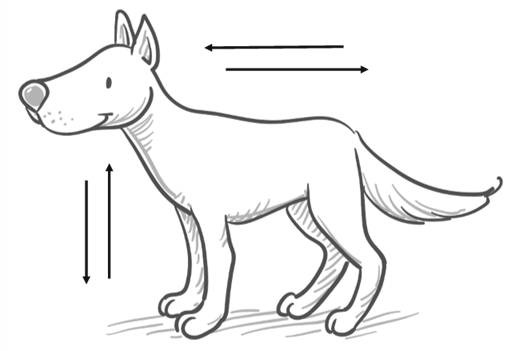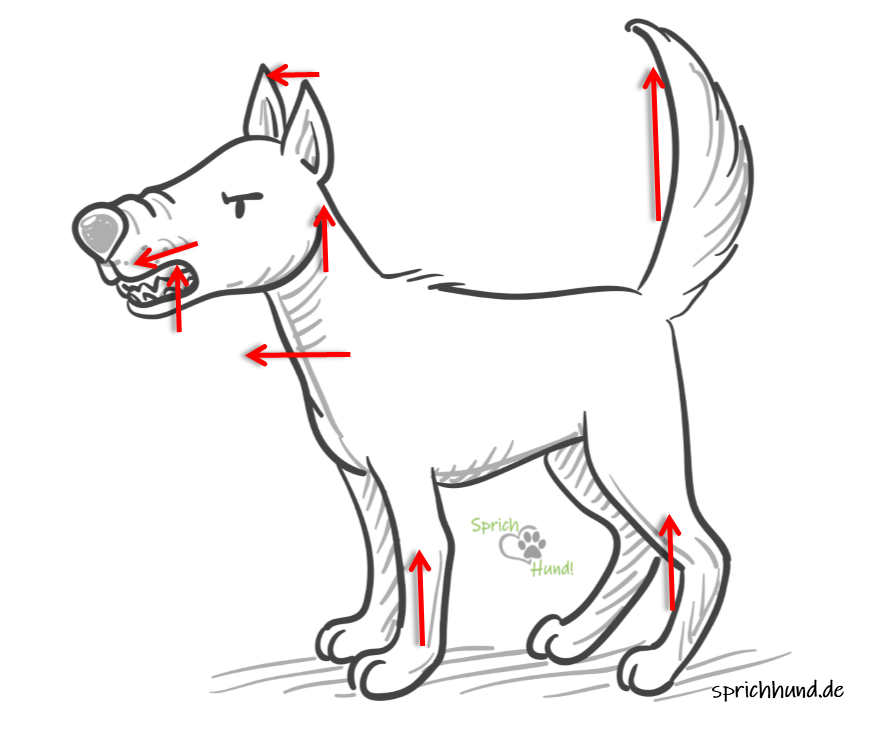The fact that children can’t read body language properly is really problematic. Aurea Verebes, a German trainer specializing in dog-child relationships and bite prevention showed three pictures to 103 children and asked them for their assessment. Practically none of the children got it right. If the child thinks that the dog is smiling, while they are actually threatening, that’s a “bite out of nowhere” situation waiting to happen!
Luckily neither you, nor your child have to be experts in order to read canine body language. There are some general indications to follow that even small children can understand. These are general recommendations, only you know your child’s cognitive capacities and can determine what makes sense to teach them at the moment.
General tips
- Look at as many body parts as possible – only you know your dog and can assess how important a signal is. For example windhounds naturally carry their tails lower than other dogs, therefore lowered tail alone is not necessarily a sign of distress in their case.
- Consider the specific context. If the dog is panting after a run it’s probably to cool himself down, but if you’re at home and they haven’t been playing, then it’s likely something else.
- Is the dog’s body turning towards you or away from you?
- If you stop touching the dog, do they request more? (for example by nudging)
- Is the dog’s body stiff or relaxed? For example: are they wagging only their tail or is their whole behind moving with it?
Basic body postures
Below you can see pictures showing neutral, defensive-threatening and offensive-threatening body language. The threats might be accompanied by barking, growling or snarling. In real life, body language is often more of a cocktail of signals, representing the inner conflict1. Intervene before the situation escalates, that is before your dog’s body language becomes threatening in any way.



- If you ever tried luring your dog somewhere they don’t want to go with a treat you know what I mean – part of them wants the treats, part of them fears the place and so their ears are likely turned towards you and the treat, they are sniffing, front of the body directed forwards, while at the same time the hindquarters and the tail are lowered.

